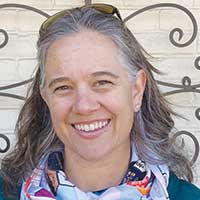Special Issue Focuses on Computing in Statistics Education
Johanna Hardin and Nicholas Horton, JSDSE Guest Editors
More than 10 years ago, Deborah Nolan and Duncan Temple Lang’s paper, “Computing in the Statistics Curricula,” was published in The American Statistician. In that influential paper, Nolan and Temple Lang wrote the following:
- The nature of statistics is changing significantly, with many opportunities to broaden the discipline and its impact on science and policy.
- To realize this potential, our curricula and educational culture must change. While there are opportunities for significant change in many dimensions, we focus more narrowly on computing and call for computing concepts to be integrated into the statistics curricula at all levels.
- Computational literacy and programming are as fundamental to statistical practice and research as mathematics.
- Our field needs to define statistical computing more broadly to include advancements in modern computing, beyond traditional numerical algorithms.
- Information technologies are increasingly important and should be added to the curriculum, as should the ability to reason about computational resources, work with large data sets, and perform computationally intensive tasks.
- We need to teach these topics in combination with scientific problems and modern statistical methods that focus on ideas and skills for statistical inquiry and working with data.
They outlined the broad set of computational topics we might want students to encounter, offered ideas about how to teach them, and discussed ways to share pedagogical resources to help faculty teach this modern material.
The Nolan and Temple Lang paper has been highly cited and prodded the statistics community to embrace computation as a foundation as important as mathematics. What has changed in the intervening years? What still needs to change? What’s needed to implement curricular shifts?
To further the discussion, the Journal of Statistics and Data Science Education (formerly Journal of Statistics Education) put out a call for papers that addressed these questions.
The response was great, with 14 papers and a commentary from Nolan and Temple Lang making up the January 2021 special issue.
Nicholas Horton and Johanna Hardin provide an introduction to the special issue in “Integrating Computing in the Statistics and Data Science Curriculum: Creative Structures, Novel Skills and Habits, and Ways to Teach Computational Thinking.”
Deborah Nolan and Duncan Temple Lang reflect on their original paper and guidance for the future in “Computing in the Statistics Curricula: A 10-Year Retrospective.”
Alex Reinhart and Christopher Genovese provide students with practice (through code review and revision) with necessary skills to understand how statistical methods are themselves products and part of the statistical pipeline in “Expanding the Scope of Statistical Computing: Training Statisticians to Be Software Engineers.”
Mine Çetinkaya-Rundel and Victoria Ellison describe the structure for a comprehensive data science course taught with no prerequisites that helps students “plan, acquire, manage, analyze, and communicate the findings” of large data sets in “A Fresh Look at Introductory Data Science.”
Thomas Donoghue, Bradley Voytek, and Shannon Ellis present their approach to data science as creative problem solving with a particular focus on practice and structures to have students work through repeated complete data analyses in “Teaching Creative and Practical Data Science at Scale.”
Aimee Schwab-McCoy, Catherine Baker, and Rebecca Gasper interpret a survey of the statistics and data science community to identify consensus curricular goals and challenges, including how difficult and important it is to effectively teach computational thinking, in “Data Science in 2020: Computing, Curricula, and Challenges for the Next 10 Years.”
Brian Kim and Graham Henke motivate and contextualize the need for providing a day-one programming platform using Jupyter Notebooks, GitHub, and Binder so students can immediately start analysis in “Easy-to-Use Cloud Computing for Teaching Data Science.”
Philipp Burckhardt, Rebecca Nugent, and Christopher Genovese describe ISLE—a web-based e-learning comprehensive platform for data analysis, collaboration, and reproducible work—in “Teaching Statistical Concepts and Modern Data Analysis with a Computing-Integrated Learning Environment.”
Ellen Gundlach and Mark Ward highlight a large-scale living learning community focused on data science but available to students from any major or background in “The Data Mine: Enabling Data Science Across the Curriculum.”
Allison Theobold, Stacey Hancock, and Sara Mannheimer describe—as an alternative to full courses—workshops designed to provide both practical skills and computational thinking perspective to environmental science researchers who regularly work at the interface of data science in “Designing Data Science Workshops for Data-Intensive Environmental Science Research.”
Frederick Boehm and Bret Hanlon detail a research project that gives students practice working with real social media data in “What Is Happening on Twitter? A Framework for Student Research Projects with Tweets.”
Albert Kim and Johanna Hardin showcase a class project whose focus expands beyond the data analysis cycle into an iteration of the data analysis cycle where students reflect on an initial analysis and then repeat the process in “‘Playing the Whole Game’: A Data Collection and Analysis Exercise with Google Calendar.”
Mine Dogucu and Mine Çetinkaya-Rundel outline the basics of web scraping and suggest classroom activities for students to practice in “Web Scraping in the Statistics and Data Science Curriculum: Challenges and Opportunities.”
Bryan Adams, Daniel Baller, Bryan Jonas, Anny-Claude Joseph, and Kevin Cummiskey express the importance of multivariable thinking and describe structures for implementing it early and often into the curriculum through the use of computational tools in “Computational Skills for Multivariable Thinking in Introductory Statistics.”
Matthew Beckman, Mine Çetinkaya-Rundel, Nicholas Horton, Colin Rundel, Adam Sullivan, and Maria Tackett motivate the importance of version control tools in multiple courses as a component of reproducible analysis and data acumen in “Implementing Version Control with Git and GitHub as a Learning Objective in Statistics and Data Science Courses.”
Victoria Woodard and Hollylynne Lee describe the thought process of students working through data analysis procedures in an intensive qualitative study in “How Students Use Statistical Computing in Problem Solving.”



















